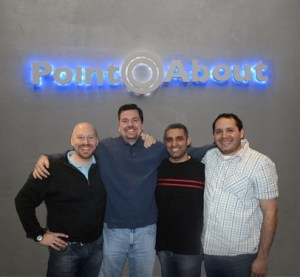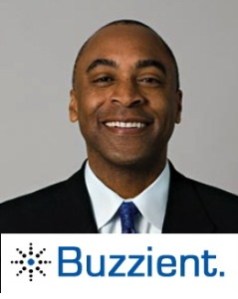 In my last post, I discussed why the odds of a rookie entrepreneur getting seed financing from a VC are very slim. The reality is that less than 5% of venture money goes to seed-stage startups; VCs typically invest when a company has a working product, a tested business model, and a strong management team. It’s the entrepreneurs who take the risk; not the VCs. They beg and borrow money from friends and family, max out their credit cards, and sometimes make do by living at home with their parents. Yet, very often, it’s the VCs who get the glory. I don’t think that’s fair. So in this post, I’m going to highlight three bootstrapped companies, and share the advice of their founders. In my books, entrepreneurs are the real heroes—those who make the innovation happen. They are the ones you should be following on Twitter and learning from, not boastful VCs.
In my last post, I discussed why the odds of a rookie entrepreneur getting seed financing from a VC are very slim. The reality is that less than 5% of venture money goes to seed-stage startups; VCs typically invest when a company has a working product, a tested business model, and a strong management team. It’s the entrepreneurs who take the risk; not the VCs. They beg and borrow money from friends and family, max out their credit cards, and sometimes make do by living at home with their parents. Yet, very often, it’s the VCs who get the glory. I don’t think that’s fair. So in this post, I’m going to highlight three bootstrapped companies, and share the advice of their founders. In my books, entrepreneurs are the real heroes—those who make the innovation happen. They are the ones you should be following on Twitter and learning from, not boastful VCs.
 Take Chicago-based Threadless. Its founder, Jake Nickell, built a very profitable $40 million business by bringing crowdsourcing to the mundane world of t-shirt design. Threadless sells millions of tees every year and has been growing annually at double-digit percentage rates. It was founded in 2000, after Nickell, then a 20-year-old web developer, won a t-shirt-design contest. With an investment of $1000, he built a website to which people submitted t-shirt designs, and the favorites were printed in limited-edition runs. In 2006, the company had gained traction, was generating nearly $10 million in revenue, and took a small investment from Insight Venture Partners.
Take Chicago-based Threadless. Its founder, Jake Nickell, built a very profitable $40 million business by bringing crowdsourcing to the mundane world of t-shirt design. Threadless sells millions of tees every year and has been growing annually at double-digit percentage rates. It was founded in 2000, after Nickell, then a 20-year-old web developer, won a t-shirt-design contest. With an investment of $1000, he built a website to which people submitted t-shirt designs, and the favorites were printed in limited-edition runs. In 2006, the company had gained traction, was generating nearly $10 million in revenue, and took a small investment from Insight Venture Partners.
My Q&A with Jake:
Would you have taken a VC investment if you could have, when you started?
Definitely not, as I was starting a hobby and not a business. It’s kind of like asking if I would consider a VC investment to help me start learning to skateboard. Sure, I’d spend a couple hundred bucks on a board, some pads and maybe some materials to build a ramp, but I’m not looking for millions or even hundreds or tens of thousands to just create something for fun. Even if I was starting a business, I don’t think I was raised that way or have that type of personality. I didn’t even have my first credit card until I was maybe 23, so I really just don’t do well with spending money I don’t have.
Why did you take investment and how has that experience been? What changed after taking VC?
We were having major operations trouble and weren’t incredibly excited about fixing it ourselves. I never finished college and my background is more in art/programming. In ’05 if you ordered a tee during our holiday sale, you’d probably get it three weeks after Christmas. We had a few choices… outsource all that stuff (but still have to manage it), work with consultants to help us figure out what to do, or to get someone who knew what they were doing to invest in the company and help us. We felt that last option was best.
The experience has been great. There was no shortage of interest from VC firms in investing in us, so we got to be pretty choosy about whom we worked with. We got really comfortable with Insight as they had some programs in place for helping us, and we got along really well with them. A lot has changed after taking the VC—we are now operationally sound and actually ship orders out in a decent timeframe!
What advice would you give fellow entrepreneurs?
If you want your life to be fun as an entrepreneur, I suggest going into it with realistic expectations and to measure your success in different ways than financially. I’ve done well financially with Threadless, but if I had to give up one thing, the money would be the first thing to go. The happiness, relationships, enrichment in others’ lives, the community that now exists; the opportunities brought to artists—that’s the success that really matters for Threadless. Build your business in a way that lets you say that, and mean it too.
 Pointabout is a Washington D.C. based startup that markets a mobile-application builder, AppMakr.com. Founded in 2008, by Scott Suhy, Daniel R. Odio, Sean Shadmad, and Isaac Mosquera, the company started building custom apps for companies like Disney, The Washington Post, Newsweek, and Politico. They used this revenue to fund the development of their flagship product. Two years later, the Pointabout is profitable, with revenues approaching $2 million annually. It’s not that the founders didn’t try raising VC; things are even tougher in D.C. than in Silicon Valley, so they decided to bootstrap.
Pointabout is a Washington D.C. based startup that markets a mobile-application builder, AppMakr.com. Founded in 2008, by Scott Suhy, Daniel R. Odio, Sean Shadmad, and Isaac Mosquera, the company started building custom apps for companies like Disney, The Washington Post, Newsweek, and Politico. They used this revenue to fund the development of their flagship product. Two years later, the Pointabout is profitable, with revenues approaching $2 million annually. It’s not that the founders didn’t try raising VC; things are even tougher in D.C. than in Silicon Valley, so they decided to bootstrap.
My Q&A with the team:
Would you have been better off if you could have raised VC when you started?
We’re really glad we didn’t. It’s easy to burn through a lot of cash trying to figure your business out. Bootstrapping (especially in a recession) has forced us to focus on what works, and on gaining traction. The right time to take money is when you have something that works and you want to blow it out of the water with explosive growth. Taking money too early often hurts more than it helps, and looking back on our growth, we believe that would have likely been the case with us.
Did you have to make major tradeoffs by going down the custom development/consulting route?
Sure, we made plenty of trade-offs. Many tough round-table meetings. We funded our growth by developing our AppMakr.com product based on custom app consulting revenue. This month we’ve been successful enough to break out our P&Ls so we can draw a line in the sand between the consulting and product divisions. We’ll continue to separate these two as we grow. The product drives consulting revenue when clients want features that it can’t provide. And since the consulting side is close to the customer, it helps drive our product roadmap.
What advice would you give entrepreneurs?
Focus hard and focus on your core. Almost anyone can make any one thing great if they focus on it and dedicate their life to it. If all you did was think about how to make one specific thing awesome every day, you would succeed.
Entrepreneurism is glamorized and romanticized, but at the end of the day, it’s really, really hard work, and it requires a lot of sacrifice—not just from you, but from the people around you. Make sure your friends and family are ready to support you, and then jump in. Don’t let the fear keep you from doing it. You only live once, so if this is what you’re passionate about, don’t have any regrets looking back on your life. Just do it.
 I’ve written about the dearth of women and minorities in tech entrepreneurship. Timothy Bernard Jones, an African-American entrepreneur, is one of the rare success stories. He founded Buzzient in 2007, to market a SaaS application that enables users to integrate social media into business applications. It allows Oracle CRM to integrate data from Twitter, Facebook, and YouTube, for example. Having been an associate at a VC firm in his past, Jones decided to forsake VC and to bootstrap instead. He wants to build considerable value before seriously considering venture capital. With revenues in the “low millions of dollars” and having achieved profitability, Buzzient certainly seems on track.
I’ve written about the dearth of women and minorities in tech entrepreneurship. Timothy Bernard Jones, an African-American entrepreneur, is one of the rare success stories. He founded Buzzient in 2007, to market a SaaS application that enables users to integrate social media into business applications. It allows Oracle CRM to integrate data from Twitter, Facebook, and YouTube, for example. Having been an associate at a VC firm in his past, Jones decided to forsake VC and to bootstrap instead. He wants to build considerable value before seriously considering venture capital. With revenues in the “low millions of dollars” and having achieved profitability, Buzzient certainly seems on track.
I asked Tim how much of a factor his skin color was in his decision not to raise VC.
I wouldn’t say being black put either me or Buzzient at a disadvantage, but bootstrapping has been a big advantage. I have had absolutely no illusion about being able to walk into a VC pitch wearing a t-shirt and flip-flops and walk out with a term sheet. I know that if I had dropped out of college, there is no way I would be considered “entrepreneurial” or “visionary”; I’d just be “a college dropout”. So, in my case, and for the company I lead, we’ve created a culture of self-sufficiency that is very different from the mentality I see with so many venture-funded companies. Look, we’ve already outlasted tons of venture-funded companies, and I think that’s a direct result of the survival mentality we created early on.
What were the keys to your success?
The first rule is to relentlessly focus on your customers. We have Global 5000 clients, such as Xerox, Credit Suisse, and Perkin Elmer, who rely on Buzzient for social-media insights on their existing and prospective customers. VC-backed companies often go off on tangents based on business-school strategy sessions and the like; as a bootstrapped company you live and die by how happy and successful your customers are, and in keeping them so. Everything revolves around customer focus; what people you bring into the company and when, what technology you build and what features you add to the specification; everything. If we’d not focused as much on customers, Buzzient would not have made it through the recession.
What advice would you give entrepreneurs?
Don’t believe the hype and noise about how “easy” it is to do a startup and how money is literally falling from heaven into startups. Every time I drive by Sand Hill Road, I see clumps of “fresh fish”, shuffling from pitch to pitch, who equate raising VC with having a successful company. Look, this is hard; if you’re really building something of value, it’s going to be hard, and you have to be prepared to endure a lot. The finish line is liquidity for your shareholders, investors, and employees, not a VC raise.
I’d also advise entrepreneurs to not follow VC insights on what sectors to build companies in. VCs for the most part are following trends, not looking ahead of the curve. So, as an entrepreneur you fundamentally have to do something outside the scope of what VCs are currently investing in; if not you’ll end up doing yet another me-too company that doesn’t stand out. That means you have to consciously ignore a lot of the noise about trends, who got funded, the “blah blah blah” of the tech world. That’s the only way you’ll be able to focus on creating your own unique value proposition.
All these entrepreneurs have great advice to offer, don’t they? There are thousands like these who have paved the entrepreneurial trails—thousands whom you should listen to and learn from.
Editor’s note: Guest writer Vivek Wadhwa is an entrepreneur turned academic. He is a Visiting Scholar at UC-Berkeley, Senior Research Associate at Harvard Law School and Director of Research at the Center for Entrepreneurship and Research Commercialization at Duke University. Follow him on Twitter at @vwadhwa





























Comment